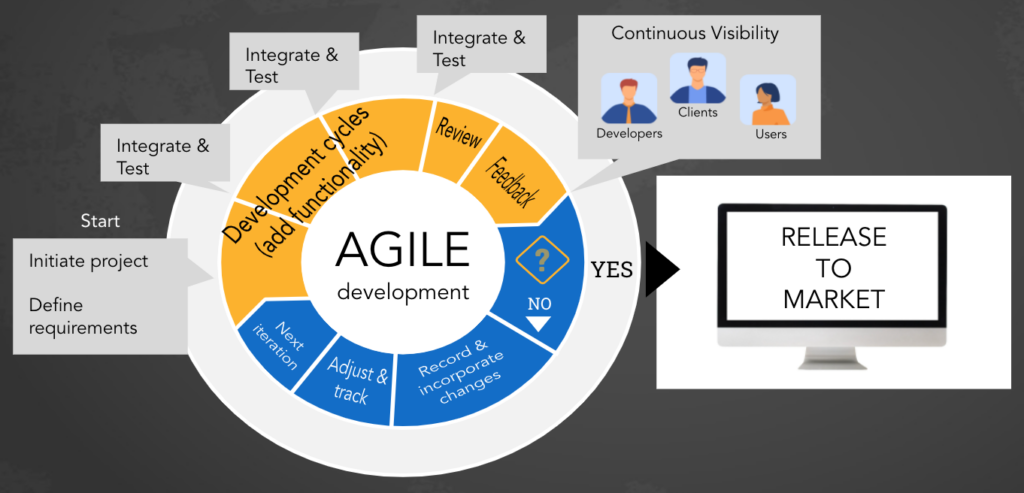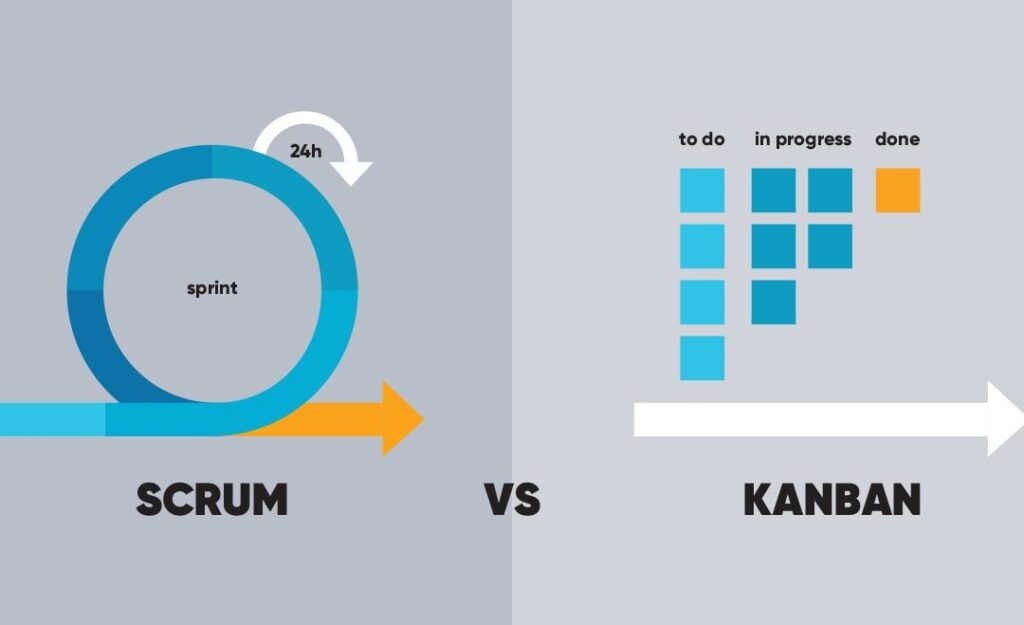Practicing agile software development or product development requires agile teams to follow a specific philosophy. While there is no one-size-fits-all solution, teams must work together to figure out the best possible solution for their situation.
Many teams prefer the Scrum framework, Kanban, or a combination of both as a mixed methodology.
To determine the right approach, you must understand how to track, monitor, plan, and release product or software solutions.
In this article, we go over how Scrum, Kanban, and Kanplan differ from each other as well as the circumstances in which each one is best.
Scrum and Kanban: Key Differences
Every agile team has a somewhat different approach to the agile methodology. Different approaches make the agile methodology work for different kinds of companies.

The most common among them are:
- Scrum – The Scrum methodology divides all work into several sprints. At any given time, the ongoing sprint and its tasks are the Sprint team’s top priority. The Scrum approach requires detailed roadmaps, better prioritization, and a modern approach to product management.
- Kanban – The Kanban approach is about giving team members enough tasks and work to ensure they’re working at capacity at all times. Kanban teams maximize productivity by eliminating idle times. That requires focused and flexible planning along with complete transparency among the kanban team. That’s because it uses a Kanban board where each team member looks at the duties of every other Kanban team member. The Kanban world is best for operational teams that work under a continuous delivery schedule where task priorities change at any time.
Both methods are valid for agile teams and provide unique benefits.
What Scrum and Kanban do for you
The following is a list of factors that differentiate Scrum from Kanban.
For Scrum:
- Scrum is about managing a sprint backlog that details tasks or story points.
- It has specific roles, including the development team, product owner, and a Scrum Master.
- The Scrum Master is the primary facilitator and problem solver.
- It uses time-boxed iterations on a continuous improvement basis.
- Scrum teams focus on completing tasks in the shortest time possible.
For Kanban:
- Kanban utilizes dashboards called Kanban boards.
- It’s a visual-centric system for development managers, product managers, and the engineering team.
- There are no specific roles in Kanban. Instead, a cross-functional team leads the efforts.
- Each iteration requires duration planning from scratch to minimize backlog issues.
- Rather than one team member, kanban allows every team member to take a leadership role.
- Kanban focuses on fast continuous integration and improvement.

Credits: We Square
However, Kanban boards don’t have backlog functionality so there’s no specific Kanban backlog. In some cases, an engineering team splits its boards depending on different work areas. However, even in that case, the combined team board ends up being overwhelming.
Mixed Agile Methodology
The solution to these problems was a mixed agile methodology that benefits from both Scrum and Kanban approaches.
Using the first column of a board as the Kanban backlog column causes prioritization issues. That poses a bigger problem as you perform tasks of more complexity since it brings about a long to-do list.
For that reason, companies use a Scrum Kanban combination, otherwise known as Scrumban. Teams manage sprint with a Scrum board backlog while using WIP limits and cycle time from Kanban.
Kanban project management under Scrum boards works for some but a lot of teams don’t like to work with iterations. However, they still want to go through the backlog grooming process.
That is where a second mixed agile methodology is born known as Kanplan.
Kanplan in Agile Development
Kanplan is where your backlog meets Kanban. It’s a solution for your disorganized to-do list since it gives you the ability to backlog groom without working in sprints.
The biggest pain point of most non-scrum teams is that they want to bring backlogs without adding iterations.
On top of that, typical build engineering work like ad hoc requests and incidents don’t fit within the Scrum framework. That’s why people transition to Kanban and then Kanplan.
In short, Kanplan brings backlogs to your Kanban project. How it works is that your Kanban board splits into a backlog screen and a Kanban board. In a way, it’s similar to Scrum boards.
For example, Atlassian software allows you to go to a wide column backlog after clicking its backlog icon. This allows backlog grooming to assign issues to your workflow. Combining scrum and Kanban boards into one agile board functions similar to a scrum board backlog.
Most software also allows simple and quick editing of issues and tasks within their reliable infrastructure.
Therefore, you have your progress column and project workboard on one end. On the other hand, feel free to groom your backlog in plan mode as you please to change issue priorities and add/remove tasks.
Since you won’t see any clutter on your boards, your weekly planning meetings are more productive which fosters overall team growth.
Benefits of Kanplan
Every Kanban team struggles to manage and prioritize their to-do lists. Using the first column of a Kanban board is only a solution when starting out.
As your Kanban project grows and the list becomes bigger, that solution starts becoming a problem. You’ll have problems in visualization and your planning will take a hit.
Kanplan allows Kanban teams to add a listview backlog column. You get backlog functionality and the ability to groom it as your go. If your team is familiar with scrum, you’ll have an easier time utilizing Kanplan.
The primary difference between Scrumban and Kanplan is that Kanplan allows you to move cards and tasks without having sprints.
A lot of Kanban teams move away from Scrum to avoid working in iterations and sprints. They believe proper prioritization of tasks is better than regular sprints.
In Kanplan, Kanban teams can utilize planning features without the need to plan sprints. That means they plan to work how they want and set deadlines on their own.
The agile method of planning through a Kanban board allows for maximum efficiency and productivity.
Kanplan vs Kanban: Key Takeaways
Kanban and Scrum are robust process tools and methodologies that help improve project management across organizations. However, not all organizations work with a single agile framework.
Most need to utilize a mixture of these methodologies to keep teams happy. Hence, the creation of Scrumban and Kanplan.
If you want to figure out what works best for your team and organization, you have to experiment with each methodology. Whether you go for automated testing or manual testing, your tests need to happen in a live production environment.
That will help you determine whether you need a strict framework like Kanban or a hybrid approach like Kanplan.